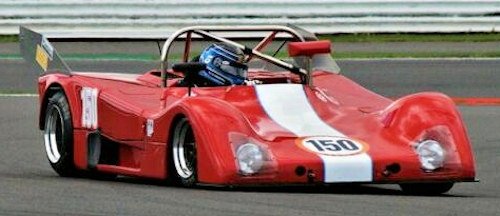GRD (Group Racing Developments)
History
GRD began as a subsidiary of the Norfolk Light Engineering Company in 1971. Formula 3, Formula 2, and Formula Atlantic cars. GRD, unlike its competitors, did not have a permanent factory team. GRD was a precursor of Van Diemen, a racing vehicles . Lotus, one of the most successful racing car manufacturers in the 1960s, withdrew from Formulas 2 and 3 in 1971, prompting the formation of the team.
The GRD founders expected that the remaining manufacturers March Engineering and Lola Cars would not be able to cover the demand for new racing cars alone. GRD should therefore close the gap left by Lotus. GRD has acquired many former Lotus employees, including Mike Warner, Dave Baldwin and Derek Wild. From Huron also came the designer Jo Marquart. Regardless, GRD received no factory support from Lotus. In 1972, Lotus factory driver Dave Walker secretly performed test drives for GRD. After this became known, Walker was suspended by Chapman for a Formula One race.
During the year 1974, the economic situation of the company deteriorated. The projected sales figures for 1975 led to a further negative development. In November 1974, GRD then stopped the production of new vehicles. Three previous employees took over the business. A constructed by them racing car was sold in 1975 to Van Diemen. In 1975, the company offered a few kits. At the end of the year, the operation was closed.
Formula 3
GRD's Formula 3 vehicles have been successful at times. 1972 ruled Roger Williamson with a GRD of Tom Wheatcroft Racing, the British Formula 3 Championships . In this class, three separate championships were held in 1972. Williamson participated in all championships. He won the Shell Super Oil British F3 Championship with 78 points and a lead of 34 points to runner-up Colin Vanderwell . The BARC Forward Trust British F3 Championship won Williamson two points ahead of Opel's Rikky , in the BRSCC Lombard North Central British F3 Championship Williamson finished fourth.By 1973 and 1974, the company could not build on the successes of 1972. GRD attributed this to the lack of performance by Renzo Zorzi .
The following vehicles were created for Formula 3:GRD 372,GRD 373,GRD 374 and GRD 375
Formula 2
The Formula 2 GRD were less successful than the Formula 3 models. Tom Walkinshaw , Tetsu Ikuzawa and Hiroshi Kazato drove in 1972 a GRD 272 for the GRS team, which was independent, but received factory support. They did not score points. In particular, Ikuzawa repeatedly had difficulty qualifying for the races.In 1973, three teams used cars from GRD. Roger Williamson started for Tom Wheatcroft Racing with a GRD 273. He played the first five rounds of the championship. He did not finish in the points in any race, his best result being eighth in the Jochen Rindt Memorial Trophy at Thruxton . Wheatcroft's involvement ended after Williamson's fatal accident killed in a Formula One race in the Netherlands . Other GRD teams included GRS, DART Racing and the Swedish team Pierre Robert from Reine Wisell . In addition, some private drivers used GRD cars, including Jo Vonlanthen . From 1974 GRD no longer appeared in Formula 2.
Formula 2 vehicles from GRD:GRD 272 and GRD 273
Formula Atlantic
In 1972, GRD converted two copies of the 272 according to the regulations of the Formula Atlantic. Martin Watson drove one of the cars in six of the 24 rounds of the British Formula Atlantic Championship . His best result was sixth at the race at Brands Hatch on April 16, 1972. David McConnell drove the car once, as did Roger Williamson, who finished sixth in the final race of the season, also held at Brands Hatch. 1973, Tom Walkinshaw drove a modified 273. His best result was sixth place at the Mallory Park race on June 24, 1973. Other GRD drivers were Bev Bond andRobin Smythe ; the latter drove a revised 372, d. H. a Formula 3 car from 1972. Also in 1974 appeared a few cars of GRD in Formula Atlantic; most prominent driver was Dave Walker.

